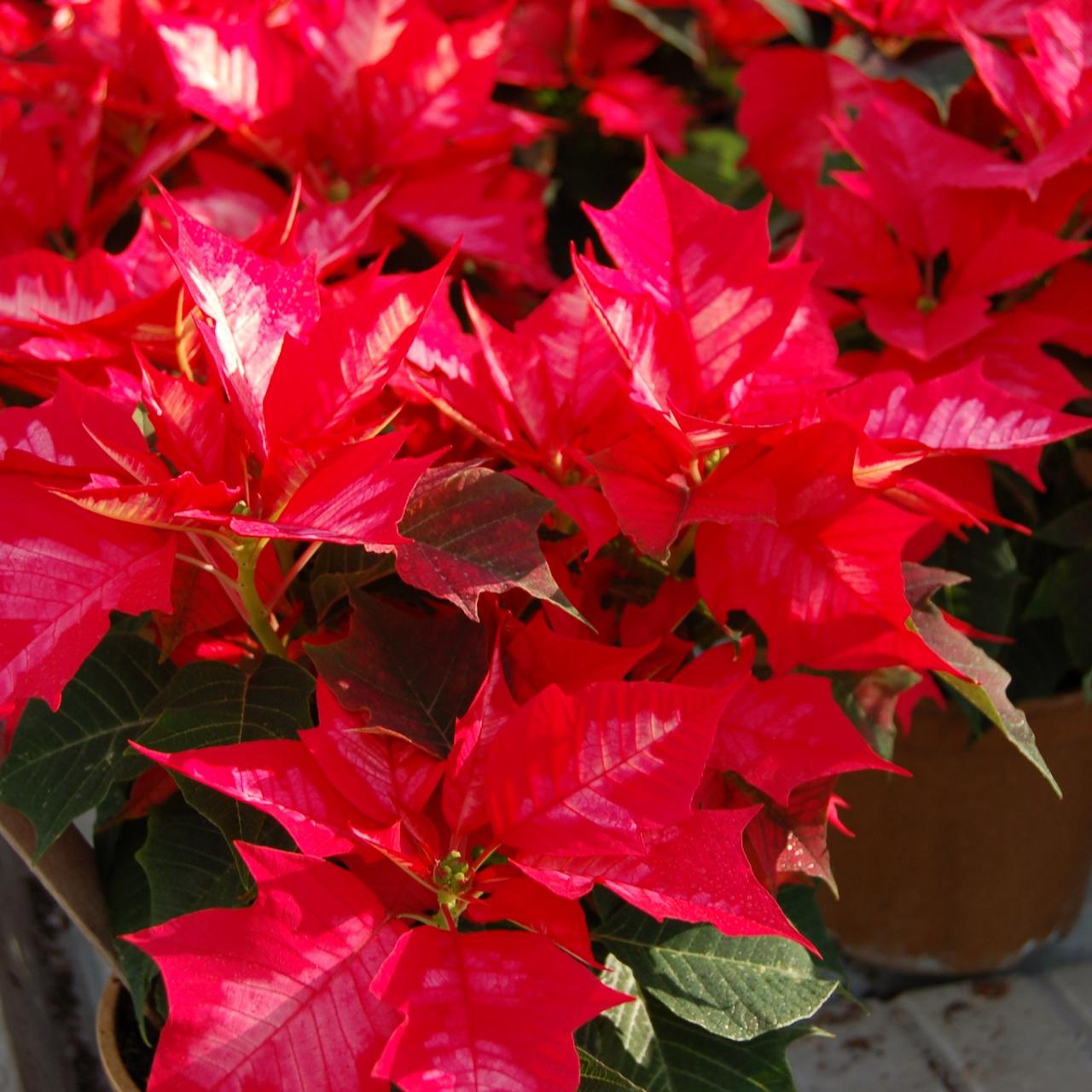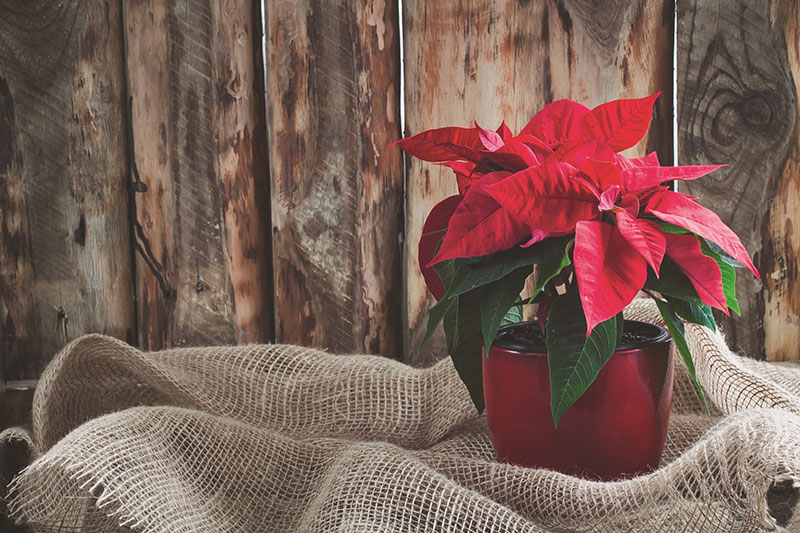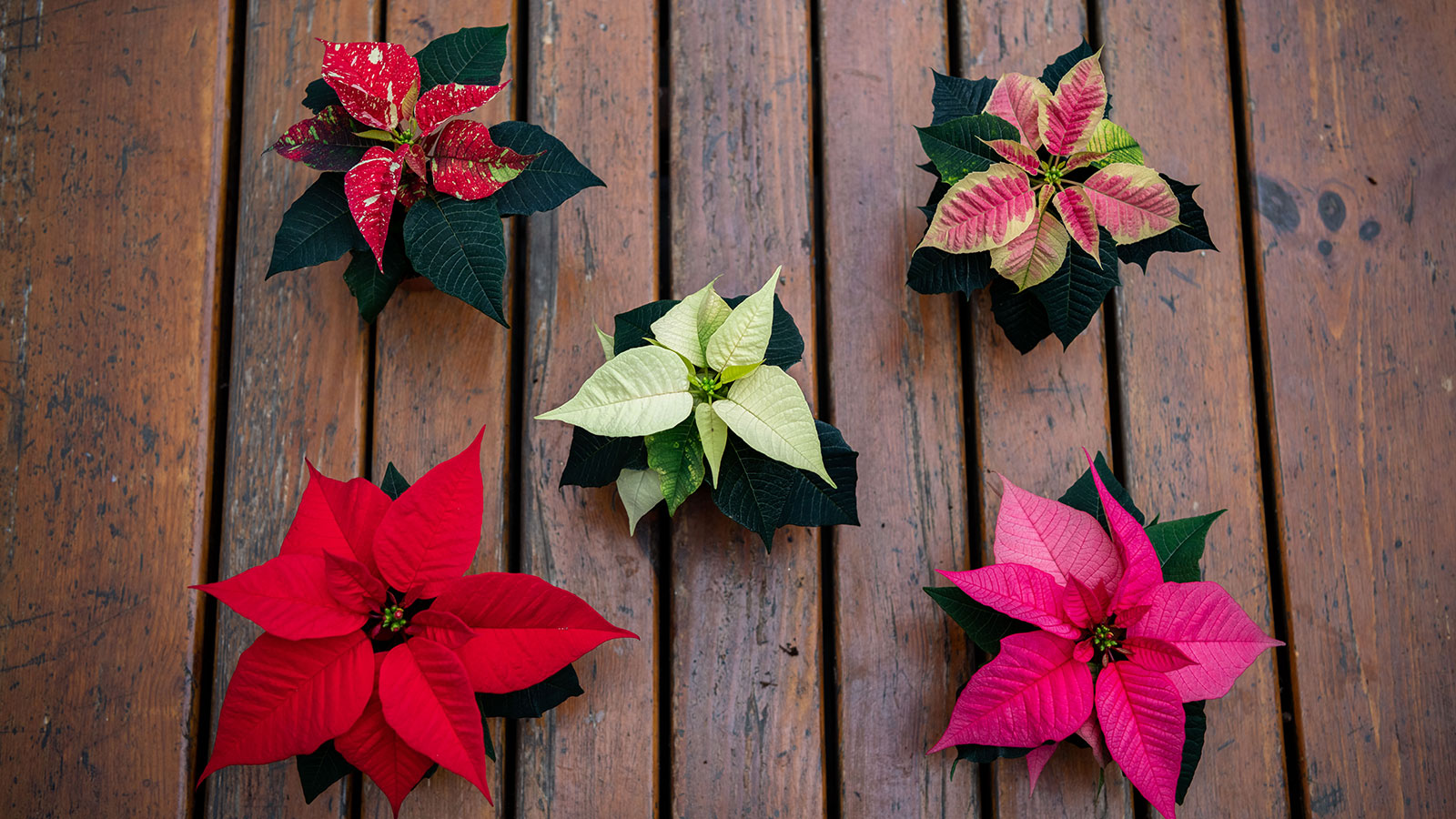The poinsettia is a popular plant that is often associated with the holiday season. Its vibrant red and green colors make it a staple in Christmas decorations, but there is much more to this plant than just its festive appearance. In this article with Impeccable Nest, we will delve into the meaning behind the poinsettia and explore its symbolism and significance.

The History of Poinsettias: From Mexico to the World
The poinsettia, also known as Euphorbia pulcherrima, is native to Mexico and Central America. It was first discovered by Joel Roberts Poinsett, the first United States Ambassador to Mexico, in the 1820s. Poinsett was fascinated by the plant’s bright red leaves and brought it back to the US, where it became popular as a decorative plant.
The Legend of the Poinsettia
According to Mexican legend, a young girl named Pepita wanted to bring a gift to the baby Jesus on Christmas Eve but had no money to buy one. An angel appeared to her and told her to gather weeds from the side of the road and place them at the church altar. When she did so, the weeds miraculously turned into beautiful red flowers, which came to be known as Flores de Noche Buena, or Flowers of the Holy Night. This legend is said to be the origin of the poinsettia’s association with Christmas.
Poinsettias Around the World
Today, poinsettias are grown and enjoyed all over the world. In the United States, they are the best-selling potted plant and are used extensively in holiday decorations. In Mexico, they are still known as Flores de Noche Buena and are used in traditional Christmas celebrations. In Europe, they are known as Weihnachtsstern, or Christmas star, and are also popular during the holiday season.
Poinsettia Meaning: What Do They Represent?
The poinsettia has come to symbolize many things over the years. Here are some of the most common interpretations of its symbolism:
Love and Joy
The poinsettia is a popular plant that is often seen during the holiday season, especially in North America. Its vibrant red color and unique shape make it a favorite for decorating homes and offices during Christmas time. But beyond its aesthetic appeal, the poinsettia also holds a special meaning that adds to its significance during this festive time of year.
The poinsettia’s association with Christmas dates back to the 16th century when Spanish conquistadors first encountered the plant in Mexico. Legend has it that a young girl named Pepita was too poor to buy a gift for baby Jesus on Christmas Eve. So she gathered some weeds from the roadside and placed them at the church altar. Miraculously, the weeds turned into beautiful red flowers, which came to be known as Flores de Noche Buena or “Flowers of the Holy Night.” These flowers were later named after Joel Roberts Poinsett, the first United States Minister to Mexico, who introduced the plant to the US in the early 1800s.
The vibrant red color of the poinsettia is often associated with love and joy, making it a perfect gift for loved ones during the holiday season. Red is a color that symbolizes passion, energy, and warmth, all of which are emotions that are closely tied to the spirit of Christmas. By giving someone a poinsettia, you are not only gifting them a beautiful plant but also conveying your warm wishes and spreading happiness.
Moreover, the poinsettia’s shape is also significant in its meaning. The plant’s star-shaped leaves are said to represent the Star of Bethlehem, which guided the three wise men to the birthplace of Jesus. This adds a religious aspect to the poinsettia’s symbolism, making it a meaningful gift for those celebrating the Christian holiday.
Aside from its symbolic meaning, the poinsettia is also believed to have healing properties. In traditional medicine, the plant’s leaves were used to treat fever and skin irritations. It was also believed to have the power to ward off evil spirits and bring good luck. While these beliefs may not hold much scientific evidence, they add to the poinsettia’s mystique and make it a cherished plant during the holiday season.
In addition to its symbolism and cultural significance, the poinsettia is also a practical gift. It is a low-maintenance plant that can last for several weeks with proper care, making it a long-lasting reminder of the holiday spirit. Its bright red color also adds a festive touch to any room, making it a perfect decoration for Christmas parties and gatherings.
The poinsettia holds a special meaning that goes beyond its beauty and popularity during the holiday season. Its vibrant red color symbolizes love and joy, while its unique shape and religious associations add depth to its significance. Whether given as a gift or used as a decoration, the poinsettia is a meaningful and cherished part of the Christmas tradition.
Renewal and Rebirth
The poinsettia, also known as the Christmas flower or the Flower of the Holy Night, is a popular plant during the holiday season. Its vibrant red and green leaves make it a festive addition to any home or holiday decoration. But beyond its aesthetic appeal, the poinsettia holds a deeper meaning, particularly in Mexican culture.
In Mexico, the poinsettia is known as “Flor de Nochebuena,” which translates to “Flower of the Holy Night.” This name is derived from the legend of a young girl named Pepita who was too poor to offer a gift to baby Jesus on Christmas Eve. As she made her way to the church, an angel appeared and told her to gather weeds from the side of the road. Despite feeling embarrassed, Pepita followed the angel’s instructions and placed the weeds at the altar. To everyone’s surprise, the weeds miraculously bloomed into beautiful red flowers, which we now know as poinsettias. From that day on, the poinsettia became associated with the birth of Jesus and the miracle of Christmas.
This legend has led to the poinsettia’s association with renewal and rebirth. The plant blooms during the Christmas season, which symbolizes the birth of Jesus and the hope and joy that comes with it. It is seen as a reminder of the miraculous events that took place on that holy night, and the poinsettia’s bright red color represents the blood of Christ shed for humanity’s salvation.
Moreover, the poinsettia’s shape is said to resemble the Star of Bethlehem, which guided the three wise men to the birthplace of Jesus. This further strengthens its connection to the Christmas story and adds to its significance as a symbol of the holiday.
In addition to its religious symbolism, the poinsettia also holds cultural significance in Mexico. It is believed that the plant’s red and green colors represent the country’s national colors, making it a source of pride for many Mexicans. The poinsettia is also used in traditional Mexican Christmas celebrations, such as the “Posadas,” where it is often displayed on altars and used to decorate homes and churches.
In modern times, the poinsettia has become a popular holiday plant all over the world, with its meaning and symbolism transcending borders and cultures. However, its significance in Mexico remains deeply rooted in its association with the birth of Jesus and the celebration of Christmas. It serves as a reminder of the true meaning of the holiday and the importance of faith, hope, and love.
The poinsettia holds a special place in Mexican culture as the Flower of the Holy Night. Its association with renewal and rebirth, as well as its ties to the Christmas story, make it a meaningful symbol during the holiday season. So next time you see a poinsettia, remember its rich history and the message of hope and joy it represents.

Success and Celebration
The poinsettia, also known as the Christmas flower or the Mexican flame leaf, is a popular plant that is often associated with the holiday season. Its vibrant red and green leaves make it a staple in many homes and businesses during this time of year. However, the poinsettia has a deeper meaning beyond its festive appearance.
In some cultures, the poinsettia is seen as a symbol of success and celebration. This symbolism can be traced back to its origins in Mexico, where it was first discovered by the Aztecs. According to legend, a young girl named Pepita wanted to offer a gift to Jesus on Christmas Eve but had nothing to give. An angel appeared and told her to gather weeds from the side of the road and place them at the church altar. When she did so, the weeds miraculously turned into beautiful red flowers, which we now know as poinsettias.
This story is significant because it represents the idea of turning something ordinary into something extraordinary. The poinsettia, once considered a common weed, became a symbol of beauty and success. This message resonates with many people, especially during the holiday season when we reflect on our achievements and look towards the future with hope and optimism.
Furthermore, the bright red color of the poinsettia is often associated with love, passion, and joy. It is a color that evokes strong emotions and is often used to express celebration and happiness. This makes the poinsettia a perfect choice for decorations during special occasions and events such as weddings, birthdays, and anniversaries.
In addition to its symbolism of success and celebration, the poinsettia also holds religious significance for Christians. Its star-shaped leaves are said to represent the Star of Bethlehem, which guided the wise men to the birthplace of Jesus. This adds another layer of meaning to the poinsettia, making it a meaningful and cherished plant for many during the holiday season.
The poinsettia’s popularity as a symbol of success and celebration has spread beyond its origins in Mexico. Today, it is widely recognized and used in various cultures and countries around the world. Its bright colors and festive appearance make it a versatile and beloved choice for decorations, whether it be in homes, offices, or public spaces.
The poinsettia holds a special meaning in many cultures, representing success, celebration, love, and religious significance. Its story of transformation and beauty serves as a reminder to appreciate the ordinary things in life and find joy and hope in unexpected places. So next time you see a poinsettia, remember its deeper symbolism and let it bring a sense of joy and celebration into your home.
Poinsettia Meaning: in Festival
Poinsettias are a popular plant that is often associated with the holiday season, particularly Christmas. These vibrant and festive plants have become a staple in many homes and businesses during this time of year, adorning mantles, tables, and doorways with their bright red and green leaves. However, beyond their decorative purposes, poinsettias also hold significant meaning in festivals and celebrations.
The poinsettia plant is native to Mexico and Central America, where it was first discovered by the Aztecs. The Aztecs called the plant “Cuetlaxochitl,” which means “flower that withers, mortal flower that perishes like all that is pure.” They believed that the plant symbolized purity and used it in religious ceremonies and rituals. The Aztecs also used the plant’s sap for medicinal purposes, such as treating fevers and skin irritations.
In the 17th century, Spanish conquistadors brought the poinsettia plant to Europe, where it gained popularity as an ornamental plant. In the 19th century, Joel Roberts Poinsett, the first United States Minister to Mexico, became fascinated with the plant and brought it back to the US. He introduced the plant to the American public, and it soon became known as the “poinsettia” in his honor.
The poinsettia’s association with Christmas began in the 16th century when a Mexican legend tells the story of a young girl who had no gift to offer baby Jesus at the Nativity scene. As she wept outside the church, an angel appeared and told her to gather weeds from the roadside and place them at the altar. When the girl did as she was told, the weeds miraculously turned into beautiful red flowers, which we now know as poinsettias.
Since then, poinsettias have been closely linked to the Christmas holiday, representing the Star of Bethlehem and the blood of Christ. In Mexico, poinsettias are known as “Flores de Noche Buena,” which translates to “Flowers of the Holy Night.” They are often used in Nativity scenes and church decorations during Christmas celebrations.
In addition to their religious significance, poinsettias also hold cultural importance in festivals and celebrations around the world. In Spain, poinsettias are a symbol of the Epiphany, which marks the end of the Christmas season. In Chile, poinsettias are used to decorate homes and churches during the Feast of the Immaculate Conception on December 8th. In Peru, poinsettias are an essential part of the traditional Christmas Eve dinner, and in Guatemala, they are used to make a special holiday drink called “ponche.”
In the United States, poinsettias are celebrated on December 12th, which is National Poinsettia Day. This day honors Joel Roberts Poinsett’s death anniversary and celebrates the plant’s history and significance in American culture.
Poinsettias hold deep meaning and symbolism in festivals and celebrations around the world. From their origins in Aztec rituals to their association with Christmas and other holidays, these vibrant plants have become an integral part of our cultural traditions. Whether used for decoration or as a symbol of faith and purity, poinsettias continue to bring joy and beauty to our festivities and celebrations.
Conclusion

In conclusion, poinsettias are more than just a festive decoration. They have a rich history and symbolism that makes them a beloved plant around the world. Whether you use them as a centerpiece, give them as gifts, or simply enjoy their beauty, poinsettias are a wonderful addition to any holiday celebration. So next time you see one, remember the legend of the Flower of the Holy Night and the meaning behind this beautiful plant.

We’re Emma Carole Paradis and Kimberly Carole, the owners and designers of Impeccable Nest, based in Bedford, New Hampshire. A mother-daughter team with a love of design. Originally from Manhattan Beach, California, now based in Bedford, New Hampshire, we bring a Southern California cool and New England tradition to our design. Not only do we work together…we also live together in a multi-generational home…and a home that they are known to design for others.
